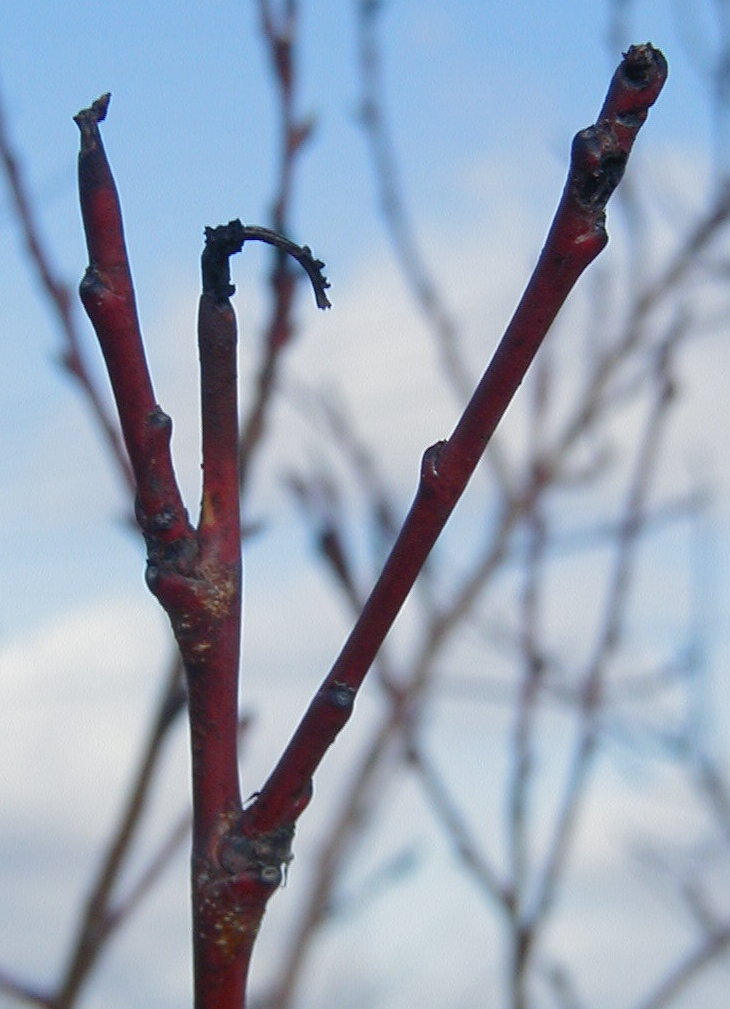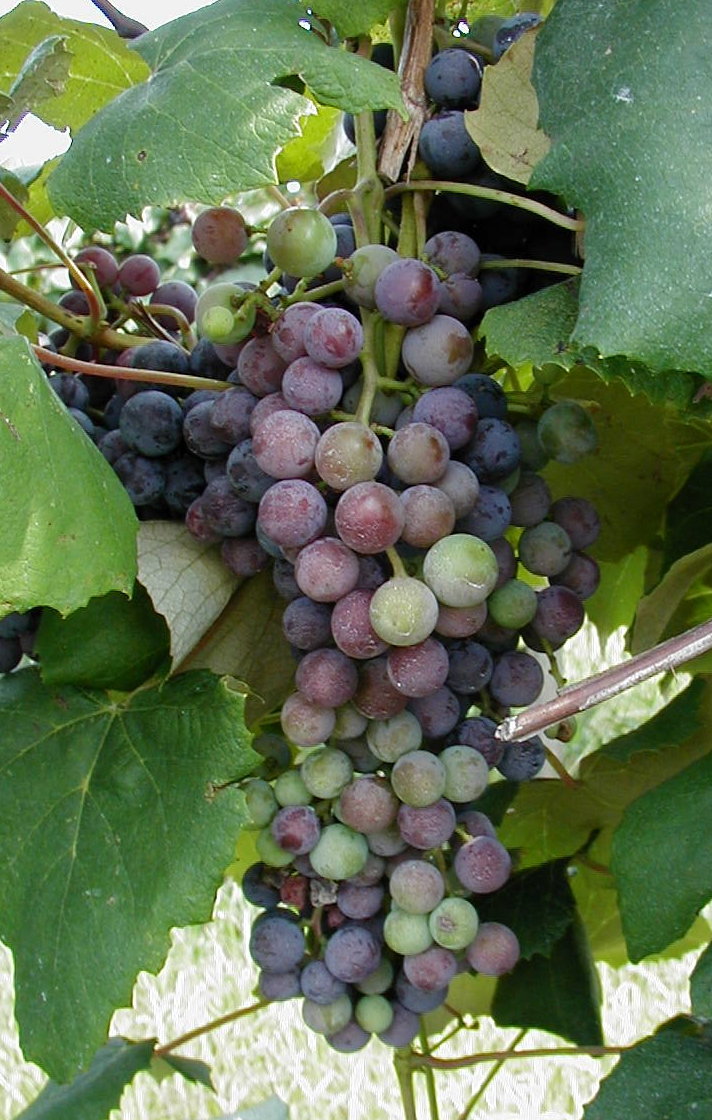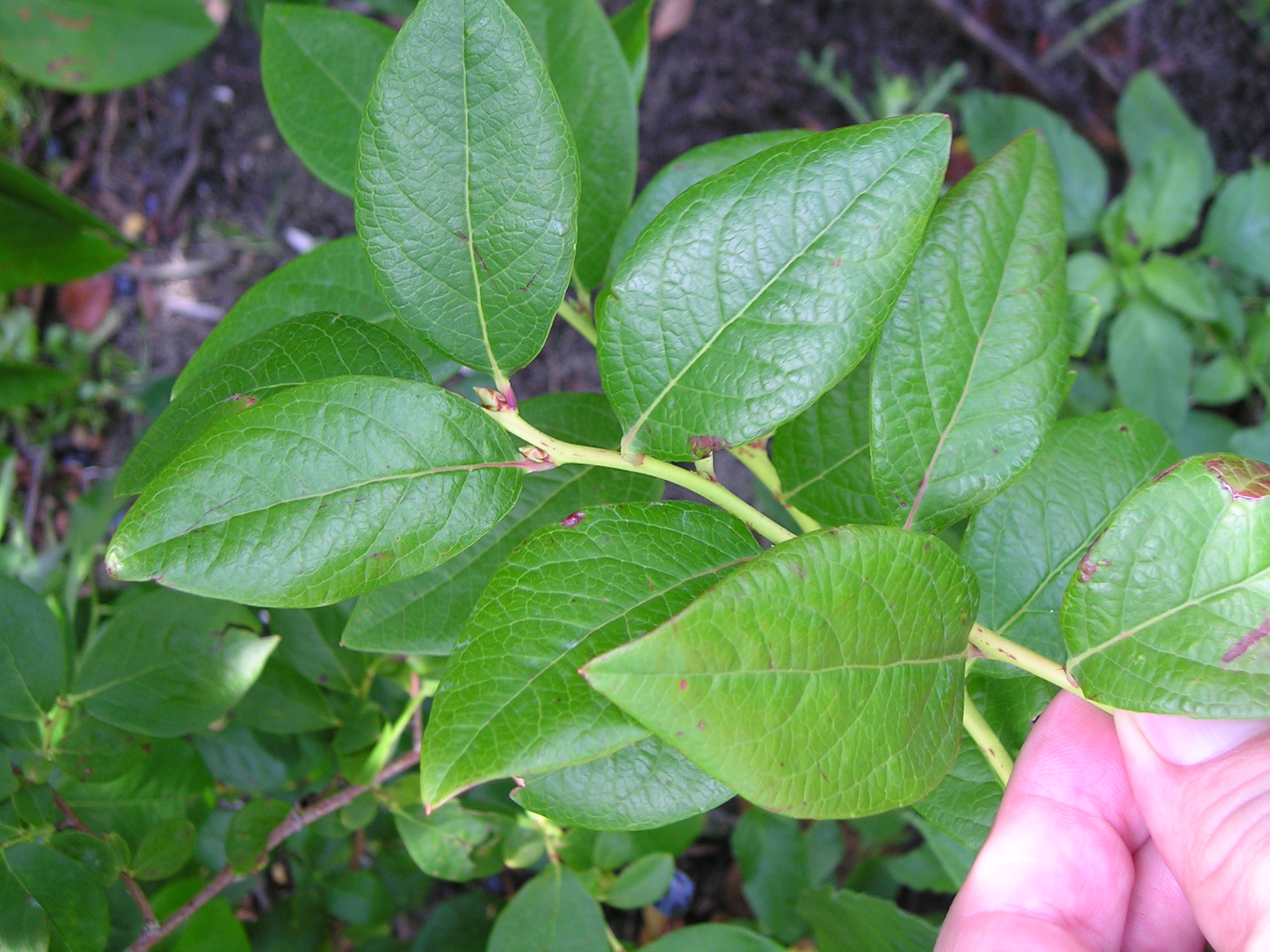Southwest Michigan fruit update – Sept. 3, 2019
Plum, pear and apple harvest is underway.

Weather
The last two weeks have seen a gradual cool down. Highs two weeks ago were near 80 degrees Fahrenheit with lows dropping from the 60s into the upper 40s. Last week saw highs generally in the 70s and lows in the 50s. The only significant rain in that period was a rainy day on Monday, Aug. 26. Labor Day weekend was cool and dry.
Rainfall totals for the last two week ranged from 0.3 to 2.3 inches. Rainfall totals for the season are 16 to 23 inches since April 1. The average is almost 20 inches. The potential evaporation for the season since March 1 is about 21 inches of water. The dry conditions in July and August have left many sandy soils dry, and these sites need irrigation.
We are seeing color change in the leaves of drought stressed and weak trees. Plants that lose their leaves early, such as five-leaf ivy, are also changing color. The forecast this week is for rain Tuesday and cooler temperatures with highs near 70 and lows around 50.
|
Southwest Michigan GDD summary from March 1 – Sept. 1, 2019 | |||
|---|---|---|---|
|
Station |
GDD 42 F |
GDD 45 F |
GDD 50 F |
|
3267 |
2836 |
2175 |
|
|
3300 |
2868 |
2200 |
|
|
3061 |
2642 |
2004 |
|
|
Average for the SW region |
3267 |
2835 |
2175 |
Check out the animated weather forecasts from Jeff Andresen at the weather tab in the Michigan State University Extension Fruit & Nuts Page. Articles and other regional reports can be found at the Fruit News page. There is no weather report this week.
Tree fruit
Trap catches for many late season moth pests remain high. Oriental fruit moth trap catches are still high in many orchards. The third generation could continue for several weeks. Obliquebanded leafroller trap catch is actually up in many orchards. Codling moth numbers are up or down depending on the orchard being trapped. A few brown marmorated stink bug adults are out. Brown marmorated stink bug can cause significant damage late in the season. Growers treating for other orchard pest will want to be sure they include materials that will also control brown marmorated stink bug.

Peaches are showing leaf discoloration and early fall color on trees with chronic winter damage and nitrogen deficiency. Gummy terminal branch tips due to oriental fruit moth entry are turning black. Phomopsis infection of these areas provide an overwintering site for this disease.
In cherries, post-harvest chlorothalonil applications help reduce late season cherry leaf spot buildup. Cherry leaves are always susceptible to leaf spot, but due to the dry conditions and post-harvest sprays most cherry orchards still have a good canopy of leaves, but a few orchards are nearly defoliated.
In plums, Stanley plum harvest is underway. Brown rot was a problem in some orchards this season. Knocking off rotted fruit before the fruit dry on the branches helps to reduce the carryover problem for next year.
In apples, Zestar harvest is underway. Macintosh harvest will start soon, as will Gala. Some growers are already picking these apples for the market and the harvest of processing apples is underway as well. Recent cool weather has improved fruit color. Sandy sites are showing effects of recent dry weather.
Estimated harvest dates for apples are approximately six to eight days later than normal and about eight days later than last year. Dry weather will increase tendency of apples to drop. ReTain applications for harvest management (stop drop), are generally recommended at 30 and 14 days before harvest. The Enviroweather apple maturity app can be used to estimate predicted harvest dates for your area.
|
Normal and predicted 2019 peak harvest dates for apple varieties in central Berrien County in southwest Michigan based on weather data at the Southwest Michigan Research and Extension Center, Benton Harbor, MI. | |||
|---|---|---|---|
|
Variety |
Normal date |
2018 Predicted peak harvest date |
2019 Predicted peak harvest date |
|
Paula Red |
Aug. 22 |
Aug. 20 |
Aug. 28 |
|
Zestar |
Aug. 22 |
Aug. 20 |
Aug. 28 |
|
Gingergold |
Aug. 20 |
Aug 18 |
Aug. 26 |
|
McIntosh |
Sep. 10 |
Sep. 8 |
Sep. 16 |
|
Gala |
Sep. 8 |
Sep. 6. |
Sep. 14 |
|
Early Fuji |
Sep. 3 |
Sep. 1 |
Sep. 10 |
|
Honeycrisp |
Sep. 13 |
Sep. 13 |
Sep. 20 |
|
Empire |
Sep. 19 |
Sep. 23 |
Sep. 26 |
|
Jonathan |
Sep. 22 |
Sep. 24 |
Sep. 30 |
|
Jonagold |
Sep. 22 |
Sep. 24 |
Sep. 30 |
|
Golden Delicious |
Sep. 25 |
Sep. 27 |
Oct. 1 |
|
Red Delicious |
Sep. 28 |
Oct. 1 |
Oct. 7 |
|
Ida Red |
Oct. 5 |
Oct. 8 |
Oct. 15 |
|
Rome |
Oct. 5 |
Oct. 8 |
Oct. 15 |
|
Fuji |
Oct. 20 |
Oct. 22 |
Oct. 28 |
|
Braeburn |
Oct. 20 |
Oct. 22 |
Oct. 28 |
|
Goldrush |
Oct. 26 |
Oct. 28 |
Nov. 3 |
We will begin our apple maturity reports this week.
Bitter rot symptoms on apple fruit are showing up both on leaves and fruit. Codling moth, oriental fruit moth and obliquebanded leaf roller are all threats to fruit now. All three of these pests are flying and laying eggs. Apple maggot numbers are down but we are still catching this fly. This is a pest of sandy soils and it often emerges after a rain.
Small fruit

Spotted wing Drosophila (SWD) trap catches continue to be high. In some areas, trap counts are down as the number of fruit available has really declined. This pest’s population builds to very high numbers into the fall. It breeds on wild and commercial berries. It only takes 10 to 14 days for the fly to go from egg to egg laying adult. Growers and scouts should monitor for this pest in the field and the edges of the field and protect ripening fruit.
Grapes are finishing or past veraison for most varieties. We have heavy dews every morning and under these conditions downy mildew can spread quickly. Botrytis and sour bunch rot of the berry clusters are a concern (see “Late season cultural and chemical options for diseases in grapes—don’t wait!”)
Grape berry moth trap catches are declining in most vineyards but we are still trapping this pest and egg laying continues. See the MSU vineyard IPM scouting report for Aug. 28, 2019 for more information.
Blueberry harvest is winding down. Some growers are still harvesting late varieties such as Elliott and Aurora. The primary pest concern is controlling SWD. Growers should be protecting their fruit. Spray coverage needs to be maintained until harvest is finished.

Maintaining good plant water relations in this dry season is important. With the shorter days, plants are using less than 0.1 to 0,05 inches of water a day. Blueberry fields should be kept moist in September. Fruit bud development is starting and expanding buds are visible. Drought conditions can reduce next year’s crop potential by reducing flower bud numbers.
Strawberries are growing well. The fields need be irrigated to maintain good plant growth. Include fungicides to protect the leaves from foliar diseases. See Protect strawberries from foliar diseases after renovation for more information.
Fall raspberry harvest is underway. Raspberries and blackberries are very attractive to SWD and fruit needs to be protected from this pest. One effective way to reduce SWD is to shorten the harvest interval to two days and pick all ripe fruit. Sort out the soft berries and destroy them away from the field. In summer raspberries, old floricanes should be removed to increase sunlight and air flow in the planting reducing disease.
Related articles
- Southwest Michigan fruit update – August 20, 2019
- MSU vineyard IPM scouting report – August 28, 2019
- Predicted 2019 apple harvest dates
- What can be done for late season downy mildew on grapes?
- Late season cultural and chemical options for diseases in grapes—don’t wait!
- Irrigating Michigan blueberries
- Sampling berries for spotted wing drosophila larvae
- Spotted Wing Drosophila Management Recommendations for Michigan Raspberry and Blackberry Growers



 Print
Print Email
Email